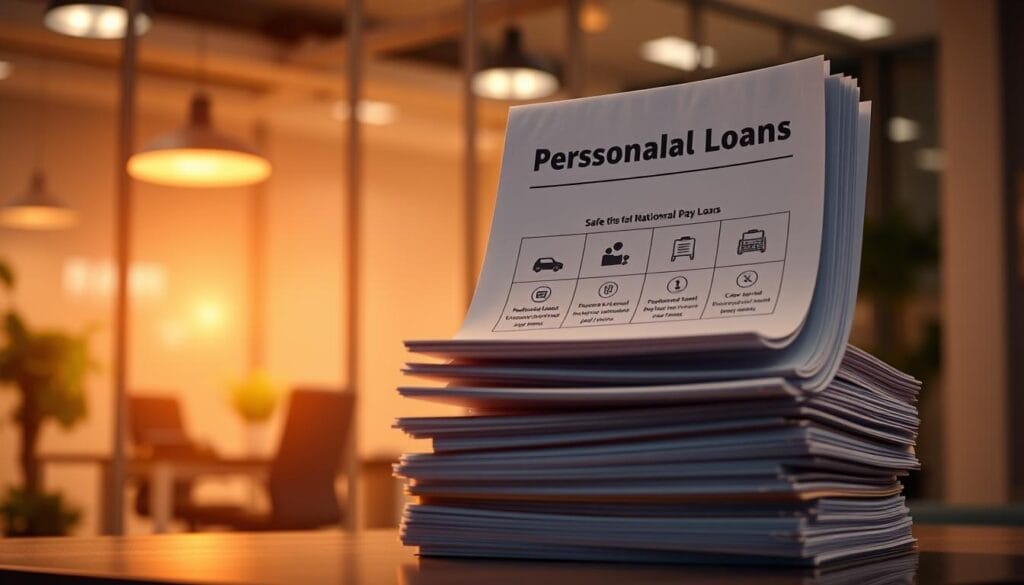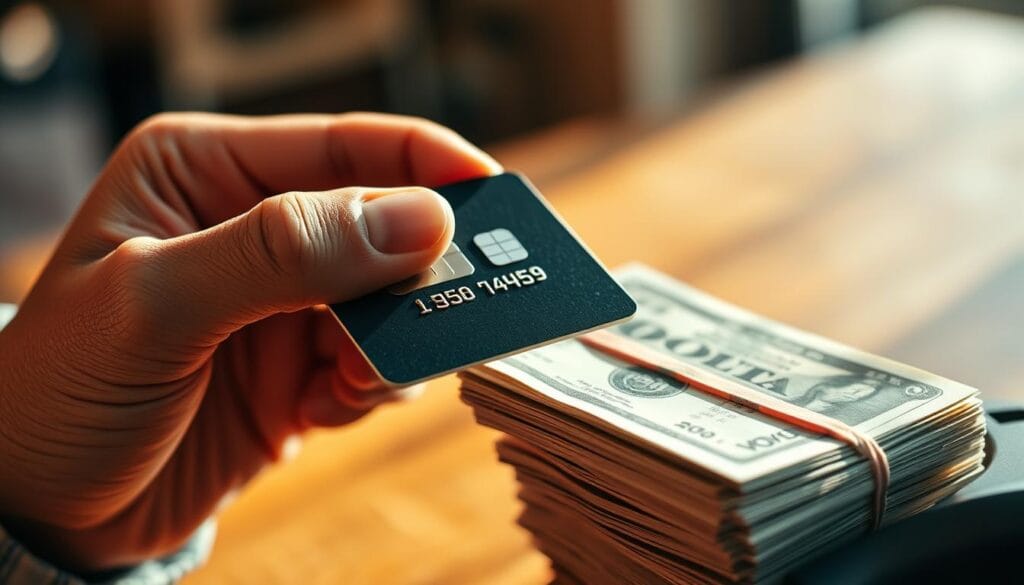Did you know that payday loans often come with an average APR of 400%? This staggering statistic from the CFPB highlights the predatory nature of these short-term financial solutions. For many, these loans lead to a cycle of debt, with a 22% renewal rate trapping borrowers in a financial spiral.
As we look ahead to 2025, it’s crucial to explore safer options that prioritize long-term financial health. CNBC Select’s methodology for evaluating alternatives emphasizes minimum loan amounts of $1,000 and 24-hour funding, ensuring accessibility and efficiency. From personal loans to credit union options, there are structured solutions designed to help individuals avoid the pitfalls of high-interest debt.
Understanding the importance of financial safety, this guide will walk you through viable alternatives that align with your needs. Whether you’re seeking immediate relief or a sustainable financial strategy, these options provide a pathway to stability. For more details on terms and conditions, visit our terms and conditions page.
Key Takeaways
- Payday loans often have an APR of 400%, making them a risky choice.
- 22% of borrowers renew their loans, leading to a cycle of debt.
- Safer alternatives include personal loans and credit union options.
- Minimum loan amounts of $1,000 and 24-hour funding are key criteria.
- Long-term financial safety should be prioritized over short-term fixes.
Understanding the Risks of Payday Loans

Payday loans are often marketed as quick fixes, but their hidden costs can be devastating. These short-term, unsecured debt instruments are designed to provide immediate cash, but they come with extremely high interest rates and fees. For example, a typical $15 fee per $100 borrowed translates to an APR of 399%. This makes them one of the most expensive forms of borrowing available.
What Are Payday Loans?
Payday loans are small, short-term loans usually due on the borrower’s next payday. They are often used by individuals who need quick cash for emergencies. However, their convenience comes at a steep price. Unlike traditional loans, these products do not require collateral, making them accessible but risky.
Why Payday Loans Are Dangerous
The danger lies in the debt spiral they create. According to the CFPB, 80% of these loans are rolled over within 14 days. This means borrowers often take out new loans to repay the old ones, leading to a cycle of debt. In fact, 22% of borrowers extend their loans six times or more, compounding the financial burden.
The High Cost of Payday Loans
When compared to other financial products, the cost of payday loans is staggering. For instance, credit cards typically have an APR of around 24%, while mortgages average 7.4%. This stark contrast highlights why these loans are considered predatory. Additionally, they are illegal in 18 states, including New York, Massachusetts, and Pennsylvania, due to their harmful impact on borrowers.
Understanding these risks is crucial for making informed financial decisions. For more insights on safer borrowing options, explore our guide on decentralized lending platforms.
Why You Need Payday Loan Alternatives USA

Short-term borrowing can lead to long-term financial struggles if not managed carefully. Many borrowers find themselves trapped in a cycle of debt due to high interest rates and fees. Understanding the risks and exploring safer options is essential for financial stability.
The Debt Cycle of Payday Loans
High-interest borrowing often creates a structural trap. Borrowers take out loans to cover immediate needs, but the short repayment terms don’t align with their income cycles. This leads to repeated borrowing, compounding the financial burden.
For example, a $500 loan with a 399% APR can cost significantly more than a Payday Alternative Loan (PAL) with an 18-28% APR. Over six months, the savings can be substantial, helping borrowers avoid the debt cycle.
How Alternatives Can Save You Money
Safer options like PALs or personal loans from credit unions offer lower interest rates and more manageable terms. These products also report payment history to credit bureaus, helping borrowers improve their credit score over time.
Additionally, organizations like the CFPB provide protections against predatory practices. By choosing alternatives, borrowers can save money and build a stronger financial foundation.
Best Personal Loans as Payday Loan Alternatives

Exploring personal loans can open doors to financial stability without the high costs of traditional borrowing. These options provide structured repayment plans and lower interest rates, making them a smarter choice for managing expenses.
Oportun: Best for No Credit
Oportun is ideal for individuals with no credit history. They offer loans ranging from $300 to $10,000 with terms of 12 to 54 months. While they charge a 10% administrative fee, their accessibility makes them a strong option for those building their credit score.
Navy Federal Credit Union: Best for Military Members
Exclusive to military members and their families, Navy Federal provides loans from $250 to $50,000. Their rates range from 8.99% to 18% APR, and they charge no administrative fees. This makes them a cost-effective choice for those in the armed forces.
First Tech Federal Credit Union: Best for Flexible Repayment Terms
First Tech offers loans from $500 to $50,000 with a unique 45-day deferment option. Partner employment is required for membership, but their flexible terms cater to diverse financial needs. Lane County residents may also benefit from additional perks.
PenFed Personal Loans: Best for Good Credit
PenFed is a top choice for borrowers with good credit. They offer loans from $600 to $50,000 with rates between 8.99% and 17.99% APR. Membership is required, but their competitive terms make it worthwhile for eligible applicants.
Choosing the right personal loan depends on your financial situation and goals. For more insights on managing debt, explore our guide on debt repayment calculators.
Payday Alternative Loans (PALs) from Credit Unions

Credit unions offer a structured and affordable solution for those seeking financial relief. Payday Alternative Loans (PALs) are regulated by the National Credit Union Administration (NCUA) and provide a safer borrowing option compared to traditional high-interest loans.
What Are PALs?
PALs are short-term loans designed to help individuals avoid the debt cycle associated with high-interest borrowing. These loans range from $200 to $1,000 with terms of 1 to 6 months. The interest rate is capped at 28% APR, making them significantly more affordable than traditional payday loans.
How to Qualify for a PAL
To qualify, borrowers must be members of a participating credit union. With over 5,800 credit unions across the U.S., membership is often accessible to those who meet specific criteria, such as living in a certain area or working for a particular employer. A $20 application fee is typically required, and borrowers are limited to three PALs within six months.
Benefits of PALs Over Payday Loans
PALs offer several advantages, including lower interest rates and structured repayment plans. Unlike payday loans, PALs include mechanisms to prevent rollovers, ensuring borrowers do not fall into a cycle of debt. Additionally, PALs can be used for emergencies like medical bills or car repairs, providing financial relief without the high costs.
Cash Advance Apps: A Modern Alternative

In today’s digital age, cash advance apps have emerged as a modern solution for accessing money quickly. These apps allow users to borrow a portion of their upcoming paycheck, often with minimal fees or no interest. Unlike traditional methods, they leverage ACH-based models, requiring bank account verification for seamless transactions.
How Cash Advance Apps Work
These apps typically link to your bank account to verify income and spending patterns. Once approved, users can access a portion of their paycheck before payday. For example, MoneyLion Instacash offers up to $500 with no interest, while Earnin allows users to borrow a percentage of their next paycheck with optional fees ranging from $1 to $14.
Many apps also integrate overdraft protection, helping users avoid costly bank charges. However, linking your account raises concerns about data privacy, as these apps require access to sensitive financial information.
Top Cash Advance Apps to Consider
MoneyLion Instacash stands out for its no-interest model and $500 limit. Earnin and Brigit are popular for their flexible fee structures, allowing users to tip what they can afford. These apps cater to diverse financial needs, offering a safer alternative to high-cost borrowing options.
Pros and Cons of Cash Advance Apps
On the positive side, these apps provide quick access to money without the high interest rates of traditional methods. They also help users avoid overdraft fees and improve financial management. However, the limits are often lower than traditional loans, typically capped at $500.
Additionally, the requirement to link bank accounts raises data privacy concerns. Users should carefully review the terms and conditions to ensure their information is protected.
Borrowing from Family or Friends

Borrowing from family or friends can be a practical solution for immediate financial needs, but it comes with its own set of challenges. In 2022, 37% of U.S. adults turned to loved ones for financial assistance, highlighting its prevalence1. While this option avoids high interest rates, it requires careful planning to maintain relationships and ensure clarity.
When to Consider This Option
This approach is ideal for smaller amounts or short-term needs. Unlike traditional lenders, family or friends may offer interest-free arrangements, reducing the overall cost of borrowing2. However, it’s crucial to assess the potential impact on relationships before proceeding.
How to Approach Borrowing from Loved Ones
Clear communication is key. Drafting a formal agreement can help prevent misunderstandings. Essential components include the loan amount, repayment terms, and consequences for default1. For larger sums, consider hybrid models where part of the money is a gift and the rest is a loan3.
Risks and Rewards of Personal Loans
While borrowing from loved ones can save on interest, it carries relational risks. Defaulting may lead to strained relationships and feelings of resentment4. On the other hand, successful repayment can strengthen trust and provide financial relief without the burden of debt.
“A written agreement ensures both parties are on the same page, reducing the risk of misunderstandings.”
For more insights on structuring such agreements, visit our guide on family loans.
Credit Card Cash Advances: A Quick Fix

Credit card cash advances can provide quick access to funds, but they come with significant costs. Unlike regular purchases, these transactions often have higher interest rates and additional fees. Understanding how they work and when to use them can help you make informed financial decisions.
How Credit Card Cash Advances Work
A cash advance allows you to withdraw money from your credit card at an ATM or bank. This amount is separate from your purchase limit and typically capped at a percentage of your total credit line. For example, if your limit is $5,000, you might only access $1,500 as a cash advance.
Unlike purchases, interest on cash advances starts accruing immediately, with no grace period. The average interest rate for these transactions is 27.28%, significantly higher than the purchase APR.
Comparing Interest Rates and Fees
Cash advances often come with a 5% fee or a $10 minimum, whichever is higher. This fee, combined with the high interest rates, makes them an expensive option. For instance, a $500 cash advance could cost $25 in fees plus daily interest.
In contrast, personal loans or balance transfers may offer lower interest rates and more manageable terms. Exploring these alternatives can save you money in the long run.
When to Use a Credit Card Cash Advance
Cash advances are best reserved for emergencies where immediate funds are needed. For example, covering a car repair or medical bill under $300 might justify the cost. However, for larger expenses, consider alternatives like personal loans or 0% APR credit cards.
For more tailored financial advice, explore AI-powered budgeting tools to manage your expenses effectively.
Side Hustles: Earning Extra Cash Fast
With rising costs, many Americans are turning to side hustles to boost their financial stability. In 2023, 36% of U.S. adults have embraced these additional income streams, according to Bankrate. Whether you’re looking to pay off debt or save for a big purchase, side hustles offer flexible ways to increase your earnings.
Top Side Hustles for Quick Income
The gig economy provides numerous options for earning extra money. Platforms like DoorDash offer an average of $20 per hour after expenses, making them a popular choice. Other labor-based models, such as TaskRabbit, allow you to monetize skills like handyman work or moving assistance.
Asset-based hustles, such as renting out your car on Turo or a room on Airbnb, can also generate significant cash. For example, Airbnb hosts in desirable areas can earn hundreds of dollars per night. These options cater to diverse needs and skill sets, ensuring there’s something for everyone.
How to Get Started with a Side Hustle
Starting a side hustle requires careful planning. First, assess your skills and available time. Platforms like Fiverr and Upwork are ideal for freelancers, offering opportunities to upskill while earning money. For gig-based work, sign up with reputable apps like DoorDash or Postmates.
It’s also important to understand the tax implications. Most side hustles classify you as a 1099 contractor, meaning you’ll need to set aside a portion of your income for taxes. Tools like QuickBooks Self-Employed can help you track expenses and deductions.
Balancing a Side Hustle with Your Main Job
Managing a side hustle alongside a full-time job requires effective time management. Start by setting clear boundaries, such as dedicating specific hours to your hustle. Use productivity tools like Trello or Asana to stay organized and prioritize tasks.
Additionally, ensure your side hustle doesn’t interfere with your primary job’s performance. Open communication with your employer can help avoid conflicts. For more tips on managing multiple income streams, explore micro-investing platforms to maximize your earnings.
Nonprofit and Charity Assistance
Nonprofit organizations play a vital role in providing financial assistance to those in need. From local charities to national programs, these entities offer a range of services designed to help individuals manage their finances and overcome economic challenges. Whether you’re seeking credit counseling or immediate aid, nonprofits provide valuable resources to support your financial journey.
Organizations That Offer Financial Help
Nonprofits like the Salvation Army and InCharge Debt Solutions are leaders in providing financial assistance. The Salvation Army serves over 30 million meals annually, addressing immediate needs while offering long-term support. InCharge Debt Solutions has helped more than 200,000 clients create effective debt management plans, reducing financial stress and improving stability.
These organizations operate on both local and national levels, ensuring accessibility for diverse communities. Whether you need help with bills, food, or credit counseling, there’s likely a nonprofit ready to assist.
How to Apply for Assistance
Applying for nonprofit aid typically requires documentation such as pay stubs, bills, and proof of income. Many organizations use sliding scale eligibility models, adjusting support based on your financial situation. This ensures that those in greatest need receive the most help.
It’s important to research the specific requirements of each organization. Some may offer online applications, while others require in-person visits. Gathering the necessary documents beforehand can streamline the process.
What to Expect from Nonprofit Aid
Nonprofit assistance often includes structured plans to help you regain financial stability. For example, debt management programs (DMPs) have achieved an 85% success rate in reducing debt for participants. These programs provide a clear path to financial recovery, offering tools and resources to manage your finances effectively.
However, it’s crucial to be cautious of scam organizations. Always verify the legitimacy of a nonprofit before sharing personal information or applying for aid. For more insights on managing your finances, explore our guide on top educational platforms for 2025.
Conclusion: Choosing the Right Payday Loan Alternative
Selecting the best financial solution requires careful evaluation of your unique needs and circumstances. Start by assessing your credit score, urgency, and the amount needed. This decision matrix helps narrow down the most suitable options for your situation.
Stress test your repayment plan against potential income volatility. Combining approaches, such as Payday Alternative Loans (PALs) with side hustles, can provide both immediate relief and long-term stability. This hybrid strategy ensures you’re prepared for unexpected financial challenges.
Looking ahead, regulatory changes in 2025 may impact borrowing rates and accessibility. Staying informed about these developments can help you make proactive decisions. For immediate assistance, consider reaching out to the National Foundation for Credit Counseling (NFCC) hotline.
For more insights on managing your finances, explore our guide on low-fee robo advisors. These tools can help you optimize your financial strategy and achieve greater stability.
FAQ
What are payday loans?
Why are payday loans considered dangerous?
What are payday alternative loans (PALs)?
How do cash advance apps work?
What are the benefits of borrowing from a credit union?
When should I consider a credit card cash advance?
What are some side hustles for quick income?
How can nonprofit organizations help with financial emergencies?
What should I consider when borrowing from family or friends?
How do I choose the right payday loan alternative?
Source Links
- https://www.investopedia.com/terms/l/loan-agreement.asp
- https://www.investopedia.com/terms/i/interest-free-loan.asp
- https://www.investopedia.com/articles/personal-finance/121015/understanding-gift-loans.asp
- https://www.psychologytoday.com/us/blog/the-money-doctor/201801/when-loans-go-bad-the-psychology-of-lending-and-borrowing

